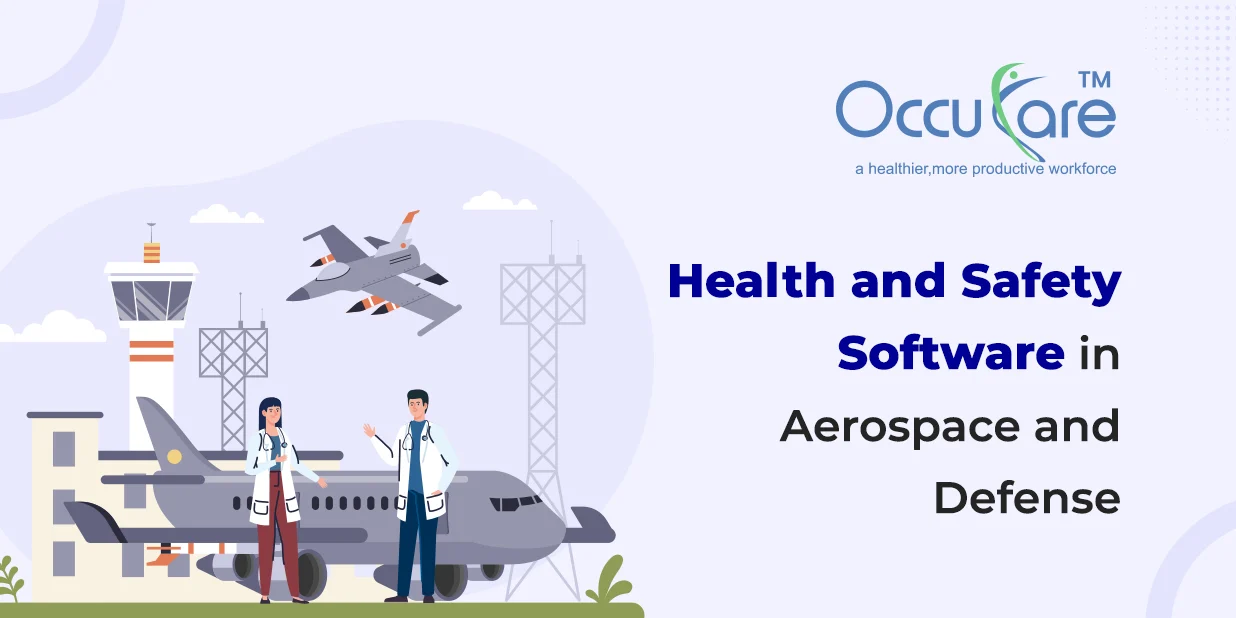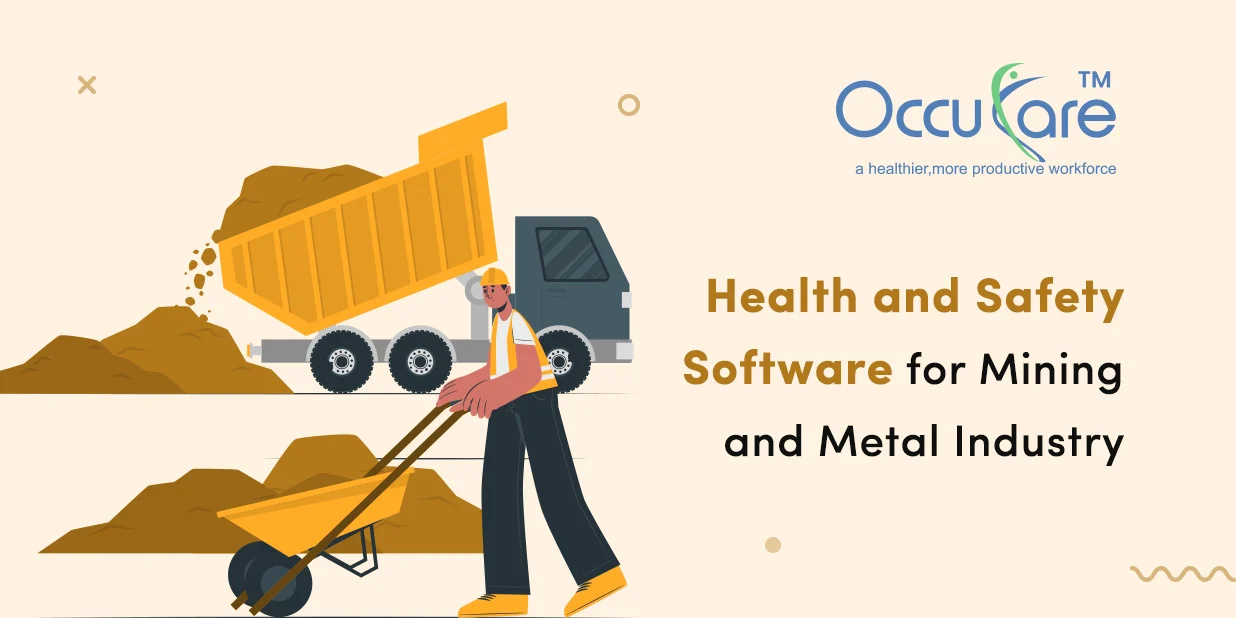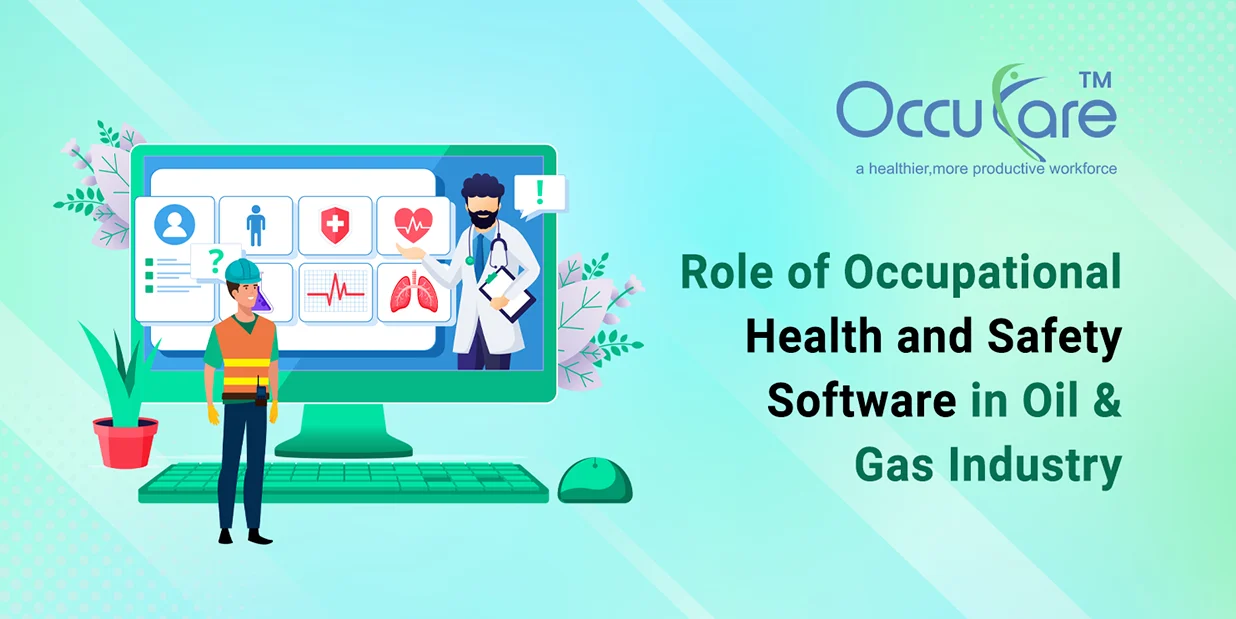In an era of rapid technological advancements and increased global security concerns, the aerospace and defence industries face the critical challenge of ensuring the safety and security of personnel, assets, and information with EHS Management Software for Aerospace & Defence Industry. The integration of health and safety systems, traditionally associated with industrial and commercial sectors, is now playing a pivotal role in revolutionizing aerospace and defence safety.
How OHS Software Helps the Aerospace & Defence Industry?
“A Shield in the Skies” of OHS Software for Aerospace & Defence Industry represents the innovative approach of utilizing comprehensive health and safety systems to create a protective layer around aerospace and defence operations. This concept envisions a multidimensional safety net that encompasses physical well-being, psychological health, data security, and operational resilience.
Key Pillars:
1. Physical Safety and Ergonomics: Aerospace and defence environments are characterized by complex machinery, high-risk operations, and challenging working conditions. Incorporating advanced ergonomic design principles, safety protocols, and protective equipment can significantly mitigate the risk of accidents and injuries. Real-time monitoring systems can track vital signs, stress levels, and fatigue, ensuring that personnel are physically fit to execute their duties safely.
2. Psychological Health and Resilience: The demanding nature of aerospace and defence roles can lead to psychological strain and burnout. Implementing mental health support programs, stress management techniques and peer counseling can bolster the psychological well-being of personnel. Furthermore, simulating high-stress scenarios and providing resilience training can enhance their capacity to make crucial decisions under pressure.
3. Data Security and Cyber Defence: With the increasing reliance on interconnected systems and data-driven technologies, safeguarding sensitive information and networks is paramount. Integrating cyber security measures into aerospace and defence infrastructure prevents unauthorized access, data breaches, and potential disruptions. Regular vulnerability assessments and continuous monitoring help identify and address potential threats proactively.
4. Operational Continuity and Disaster Preparedness: Health and safety systems extend beyond individual well-being to the preservation of critical operations. Comprehensive disaster preparedness plans, including evacuation procedures, supply chain resilience, and backup systems, ensure that aerospace and defence activities can swiftly adapt to unexpected events, thereby minimizing downtime and operational disruptions.
Merits and Demerits :-
Merits :
The concept of “A Shield in the Skies: Revolutionizing Aerospace & Defense Safety Through Health and Safety Systems” offers numerous merits and advantages for the aerospace and defence industries.
Let’s explore some of the key benefits:
1. Enhanced Personnel Safety: Implementing comprehensive health and safety systems prioritizes the well-being of personnel, reducing the risk of accidents, injuries, and fatalities. This leads to a safer working environment and improved morale among aerospace and defence professionals.
2. Reduced Operational Risks: By integrating ergonomic design, safety protocols, and disaster preparedness plans, the concept helps mitigate operational risks, ensuring smoother and more efficient operations. This translates to fewer disruptions, minimized downtime, and enhanced operational continuity.
3. Optimized Decision-Making: Psychological health and resilience programs improve the mental and emotional well-being of personnel. This, in turn, enhances their ability to make clear and effective decisions under stressful. And high-pressure situations, critical in aerospace and defence operations.
4. Cyber Security and Data Protection: Incorporating cyber security measures safeguards sensitive data, intellectual property, and critical systems from cyber threats.
5. Cost Savings: While implementing advanced health and safety systems requires an initial investment, the long-term benefits outweigh the costs. Fewer accidents and injuries lead to reduced medical expenses, worker compensation claims, and equipment repair costs, contributing to overall cost savings.
6. Improved Reputation and Stakeholder Confidence: Prioritizing personnel well-being and operational safety enhances the industry’s reputation. Stakeholders, including government agencies, partners, investors, and the public, gain confidence in the industry’s commitment to safety and security.
The merits of “A Shield in the Skies” of OHS Software for Aerospace Industry are far-reaching and contribute to the overall improvement of aerospace and defence safety, efficiency, and resilience. By prioritizing health and safety systems, the industry can establish itself as a leader in responsible. And forward-thinking practices, ultimately benefiting personnel, operations, and global security.
Demerits :
While the concept of “A Shield in the Skies: Revolutionizing Aerospace & Defense Safety Through Health and Safety Software for Aerospace & Defense Industry ” offers numerous benefits, it’s important to also consider potential demerits or challenges that could arise from its implementation.
Here are some possible drawbacks to be mindful of:
1. Initial Implementation Costs: Introducing comprehensive health and safety systems can require significant upfront investments in infrastructure, technology, training, and personnel. These costs may strain budgets, particularly for smaller aerospace and defence organizations or those with limited resources.
2. Complexity and Integration: Integrating diverse health and safety systems across different aspects of aerospace and defence operations can be complex and challenging. Ensuring seamless communication and coordination between various systems may lead to technical difficulties and delays.
3. Resistance to Change: Implementing new health and safety protocols and technologies may face resistance from personnel accustomed to traditional practices. Resistance to change could hinder the adoption and effectiveness of these systems.
4. Over reliance on Technology: While technology plays a crucial role in enhancing safety, an over reliance on automated systems and data analytics could potentially lead to complacency among personnel. They may assume that technology will always detect and prevent issues, which could compromise vigilance and situational awareness.
5. Privacy Concerns: Advanced monitoring systems that track personnel’s vital signs, stress levels, and other health data may raise privacy concerns. Balancing the benefits of data-driven insights with individuals’ privacy rights is essential to avoid potential legal and ethical issues.
6. Maintenance and Updates: High-tech health and safety systems require regular maintenance, updates, and training. Failure to keep these systems up to date could result in vulnerabilities, reduced effectiveness, and potential safety risks.
While “A Shield in the Skies” offers substantial benefits for aerospace and defence safety, careful consideration of potential demerits is essential. Addressing these challenges through thoughtful planning, effective communication, ongoing training. And a willingness to adapt can help mitigate the drawbacks and ensure a successful implementation of health and safety systems in these critical industries.
Conclusion:-
In conclusion, “A Shield in the Skies” EHS Management Software for Aerospace & Defense Industry represents a visionary approach to modernizing aerospace and defense safety.








